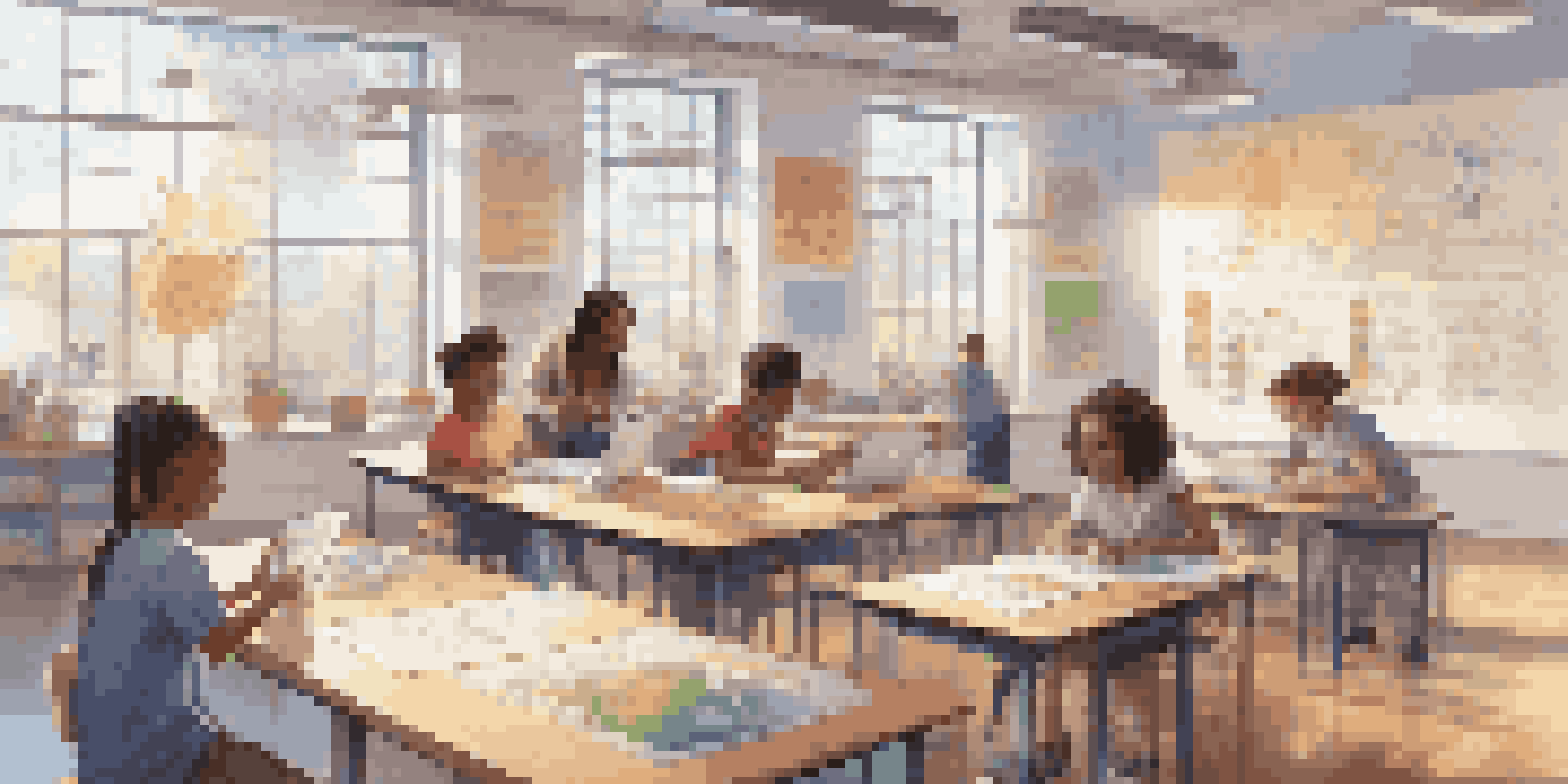The Future of STEAM: Preparing Students for Creative Careers

Understanding STEAM: Beyond Traditional Education
STEAM stands for Science, Technology, Engineering, Arts, and Mathematics, merging these disciplines to foster creativity and innovation. Unlike traditional education, which often compartmentalizes subjects, STEAM encourages students to think holistically and connect ideas across different fields. For example, a student designing a video game might use coding skills from technology, artistic creativity from the arts, and problem-solving techniques from engineering.
Creativity is thinking up new things. Innovation is doing new things.
This integration is crucial in today's world, where many challenges require a blend of analytical thinking and creative solutions. By embracing STEAM, educators are preparing students to tackle real-world problems in imaginative ways. Think of it as equipping them with a toolbox filled with diverse tools to approach any challenge they might face in their careers.
Moreover, the STEAM approach nurtures essential skills such as collaboration and critical thinking, which are vital in any creative career. When students work on projects together, they learn to respect different viewpoints and combine their strengths, making them more adaptable in the workforce.
Importance of Creativity in Modern Careers
In a rapidly changing job market, creativity is becoming increasingly valuable. Employers are looking for individuals who can think outside the box and bring fresh ideas to the table. For instance, businesses in tech, marketing, and design actively seek candidates who can innovate and adapt to new trends.

Creativity isn’t just for artists; it’s a critical component in fields like engineering and technology. Consider the tech giant Apple, which has thrived by merging innovative design with cutting-edge technology. This blend of creativity and technical skill has set them apart in a crowded marketplace, demonstrating how essential creativity is across various industries.
STEAM Merges Creativity and Skills
STEAM education integrates science, technology, engineering, arts, and mathematics, encouraging holistic thinking and collaboration among students.
By fostering creativity through STEAM education, we equip students with the mindset needed to succeed in diverse career paths. They learn that thinking creatively is not just about art—it's about finding unique solutions and being willing to take risks.
Bridging the Gap Between Education and Industry
One of the challenges in preparing students for creative careers is ensuring that education aligns with industry needs. Collaboration between educators and industry leaders can bridge this gap, ensuring that students learn relevant skills and concepts. For example, internships and workshops can provide hands-on experience that complements classroom learning.
Education is not the filling of a pail, but the lighting of a fire.
Schools can also incorporate real-world projects into their curriculum, allowing students to work on issues faced by local businesses. This not only enhances their learning experience but also gives them a taste of what to expect in their future careers. Imagine a group of students designing a marketing campaign for a local startup; this practical experience can be invaluable.
Such partnerships create a feedback loop where educators can adapt their programs based on industry trends, ensuring students are prepared for the workforce. This proactive approach is essential for nurturing the next generation of creative problem-solvers.
The Role of Technology in STEAM Education
Technology plays a pivotal role in enhancing STEAM education, providing tools and resources that make learning interactive and engaging. From coding software to virtual reality simulations, technology can bring abstract concepts to life. For instance, students can use coding platforms to create their own games, merging technology with creativity.
Furthermore, online resources and platforms have made STEAM education more accessible than ever. Students can learn from specialists around the world, participate in online competitions, and collaborate with peers, regardless of their geographical location. This global perspective can enrich their understanding of different cultures and ideas.
Creativity Drives Career Success
In modern job markets, creativity is crucial across various industries, enabling individuals to innovate and adapt to new challenges.
As technology continues to evolve, so too will the ways we teach and learn within STEAM fields. Embracing these advancements can foster a generation of tech-savvy individuals who are comfortable using new tools to express their creativity.
Encouraging Diverse Perspectives in STEAM
Diversity is a key element in fostering creativity within STEAM education. When students from various backgrounds collaborate, they bring unique perspectives that can inspire innovative solutions. For example, a team comprised of students from different cultures might approach a problem in ways that a homogenous group might not consider.
Encouraging diversity in STEAM not only enhances creativity but also prepares students to work in global environments. As businesses become more interconnected, the ability to appreciate and integrate diverse viewpoints will be crucial. It’s like creating a rich tapestry where each thread adds to the overall beauty of the design.
To cultivate this diversity, educators should actively promote inclusivity in STEM fields, encouraging underrepresented groups to participate. This approach not only enriches the learning experience but also helps dismantle stereotypes about who can excel in creative careers.
Hands-On Learning: The Key to Engagement
Hands-on learning is at the heart of effective STEAM education, transforming theoretical concepts into practical applications. When students engage in project-based learning, they are more likely to grasp complex ideas and retain information. For instance, building a robot or conducting a science experiment makes learning dynamic and fun.
These experiential learning opportunities also allow students to make mistakes and learn from them, fostering resilience and problem-solving skills. Picture a group of students experimenting with different materials to create a bridge; they learn through trial and error, developing critical thinking along the way.
Diversity Enhances Innovation
Encouraging diverse perspectives in STEAM education fosters creativity and prepares students for global workplaces.
By incorporating hands-on activities into the curriculum, educators can spark students' curiosity and passion for learning. This engagement is vital for inspiring future innovators and creators.
Preparing for the Future: Lifelong Learning Mindset
As we look toward the future, instilling a lifelong learning mindset in students is essential. The pace of change in the job market requires individuals to continually adapt and grow their skills. STEAM education encourages curiosity and a desire to explore, which are fundamental traits for lifelong learners.
Moreover, embracing a mindset of continuous learning prepares students to pivot in their careers as industries evolve. For instance, many professionals today transition between jobs or even careers multiple times throughout their lives, highlighting the importance of versatility.

By fostering an environment that values learning beyond the classroom, educators can prepare students for a future where adaptability and creativity are paramount. This approach will not only empower them in their careers but also enrich their lives.